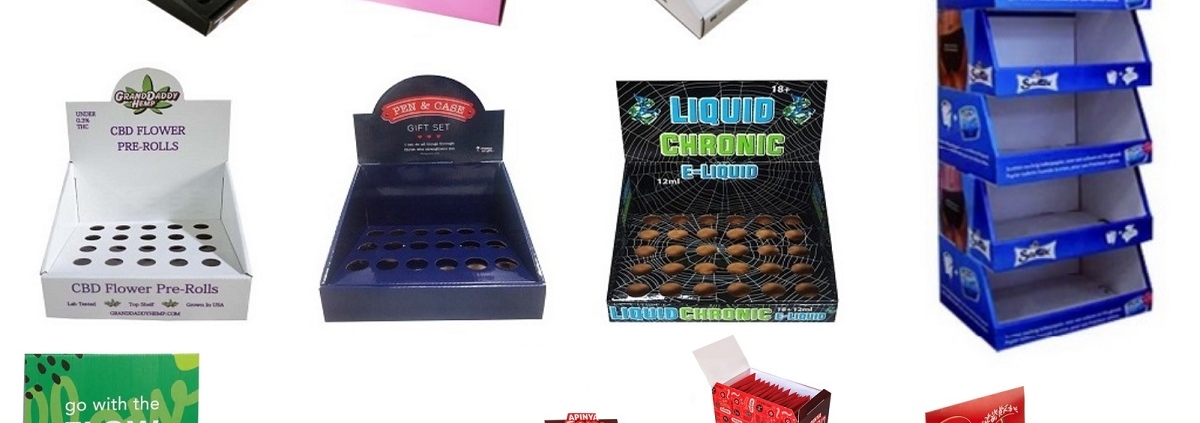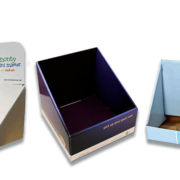How to Design Eye-Catching Retail Display Boxes
Retail display boxes play a vital role in attracting customers, showcasing products, and influencing purchasing decisions. When designed thoughtfully, they not only highlight the product but also communicate the brand’s identity, making a lasting impression on customers. In this guide, we will explore the key factors to consider when designing retail display boxes that are visually appealing and effective in driving sales.
Understand Your Brand and Target Audience
Before you start designing retail display boxes, it is crucial to have a clear understanding of your brand and target audience. The design should align with your brand’s core values, colors, and identity to ensure consistency across all your marketing materials. This will help create a memorable experience for your customers.
Consider the demographics of your target audience as well. For example, if your product is aimed at young adults, a trendy and bold design might work best. On the other hand, products meant for older customers may require a more sophisticated and minimalistic design. Think about the preferences, needs, and emotions of your target audience to create a design that resonates with them.
Incorporating Brand Identity into the Display Box Design
The colors, fonts, and overall style of the display box should reflect your brand’s personality. If you have a logo, make sure it is prominently displayed to strengthen brand recognition. Using consistent branding elements throughout your retail displays helps customers identify your product quickly, building trust and familiarity.
Focus on Functionality
While aesthetics are important, the functionality of retail display boxes should not be overlooked. These boxes are designed to display products in an organized and accessible way, so they should be practical as well as eye-catching.
Consider the size and shape of the products being displayed. The display box should have compartments or designated spaces that keep the items secure while making them easy to access. For instance, if you’re displaying smaller items, a box with individual slots or dividers will ensure that everything stays in place.
Additionally, think about the placement of the display. A well-designed retail box should be easy to assemble and place on store shelves. It should also be lightweight, durable, and easy to handle by retail staff. Keep the materials used for the box in mind to ensure they are strong enough to hold your products while maintaining an attractive look.
Choose the Right Material for Durability and Aesthetics
The material you choose for your retail display boxes has a significant impact on both the durability and appearance of the display. Popular materials include cardboard, acrylic, and wood, each with its own set of benefits and drawbacks.
Cardboard is lightweight, cost-effective, and can be printed with vibrant designs, making it a popular choice for many retail brands. It’s also versatile and can be easily molded into various shapes. Acrylic displays, on the other hand, offer a more premium feel. They are sturdy and provide a sleek, modern look. Wood can create a rustic, high-end display and is perfect for stores that sell natural or artisanal products.
Selecting the right material depends on your budget, the product you’re displaying, and the image you want to project. It is essential to balance durability with visual appeal, ensuring that the display box holds up over time without compromising on style.
Utilize Color and Graphics Effectively
Color and graphics are key elements in creating an attractive display. The right use of colors can evoke emotions and influence consumer behavior. For instance, red and yellow are often used to grab attention and create a sense of urgency, while blue and green convey trust and calmness.
When designing retail display boxes, consider the psychology of color and how it can complement your product. Use contrasting colors for the box and the product to ensure that your item stands out. Be mindful not to overwhelm the display with too many colors. A simple, balanced color scheme will often have a greater impact.
Graphics should be used to enhance the overall design. High-quality images of your products or stylized graphics related to your brand’s story can make your display more engaging. Keep graphics clear and concise, as too much visual information can detract from the product itself. Ensure the images are high resolution, so they look sharp and professional when printed on the box.
Make the Display Box Interactive
Incorporating interactive elements into your retail display boxes can engage customers in a fun and memorable way. Interactive designs not only capture attention but also encourage customers to explore your products more deeply.
One way to make the display interactive is by adding pull-out trays or rotating elements. These features allow customers to interact with the display while keeping the product neatly organized. Another idea is to include QR codes on the boxes, which customers can scan for more information, discounts, or even to participate in a loyalty program.
By giving customers an experience beyond just looking at the product, you create a deeper connection with the brand and make your display stand out from the competition.
Maintain a Clean and Organized Design
An essential aspect of creating a successful retail display box is to maintain a clean and organized layout. When designing your display, think about how the products will be presented and how the box will be arranged on the shelf or counter. A cluttered, disorganized display can overwhelm customers and make it difficult for them to focus on the products.
Use white space effectively to make the design feel less crowded. A minimalistic approach, focusing on a few key elements, can create a sense of elegance and sophistication. Ensure that product information, like pricing and product features, is easy to read and not hidden behind too many visual elements.
Remember, simplicity often leads to more striking designs. Your retail display box should direct the customer’s attention to the product, not distract them with too much information or complex visuals.
Think About the Placement and Visibility
When designing retail display boxes, it is crucial to consider where and how they will be placed within the store. The box needs to be visible and accessible to the customers. You want the design to catch their eye from a distance and guide them to your product.
Consider the traffic flow in the store and the typical behavior of customers. If your display is in an area with high foot traffic, it needs to stand out even more. If the display box is placed on a shelf, ensure that the design allows customers to easily see and access the product.
Use height and positioning creatively. A display box that is placed at eye level is more likely to capture attention. If the box is placed lower or higher, make sure the design helps elevate its visibility.
Add Functional Features That Enhance the User Experience
Adding small functional features to the retail display box can enhance the user experience and provide added value for the customer. For instance, consider including compartments for organizing related products or adding a space for product accessories. This makes it easier for customers to view all related items together, potentially increasing the chances of cross-selling.
Another option is to create a display that can be repurposed by the customer. For example, if your retail display box can be easily transformed into storage or used in another way, it adds utility to the design. The added value of a functional display box can create a positive impression of your brand and build customer loyalty.
Stay Consistent With Seasonal and Promotional Designs
Seasonal promotions and special offers are perfect opportunities to create custom retail display boxes. Designing display boxes with seasonal themes or special promotions in mind can help attract customers and create a sense of urgency.
For example, during holidays like Christmas or Halloween, incorporate relevant colors, symbols, and motifs into your display design. Seasonal packaging not only creates excitement but also offers customers a fresh experience each time they visit your store.
Similarly, if your product is part of a limited-time offer or sale, make sure the display box communicates that effectively. Use bold typography, countdown timers, or “limited edition” labels to entice customers to make a purchase before the promotion ends.
Conclusion
Designing eye-catching retail display boxes is an art that requires balancing aesthetics with functionality. The box needs to reflect your brand’s identity, catch the customer’s eye, and provide a seamless experience that highlights your products. By considering elements like materials, color schemes, interactivity, and functionality, you can create a display that stands out and encourages customers to engage with your product.
With the right design, retail display boxes can be a powerful marketing tool that enhances the shopping experience and drives sales. Remember to always keep the needs of your customers in mind and aim for a design that enhances their overall shopping journey.




Leave a Reply
Want to join the discussion?Feel free to contribute!